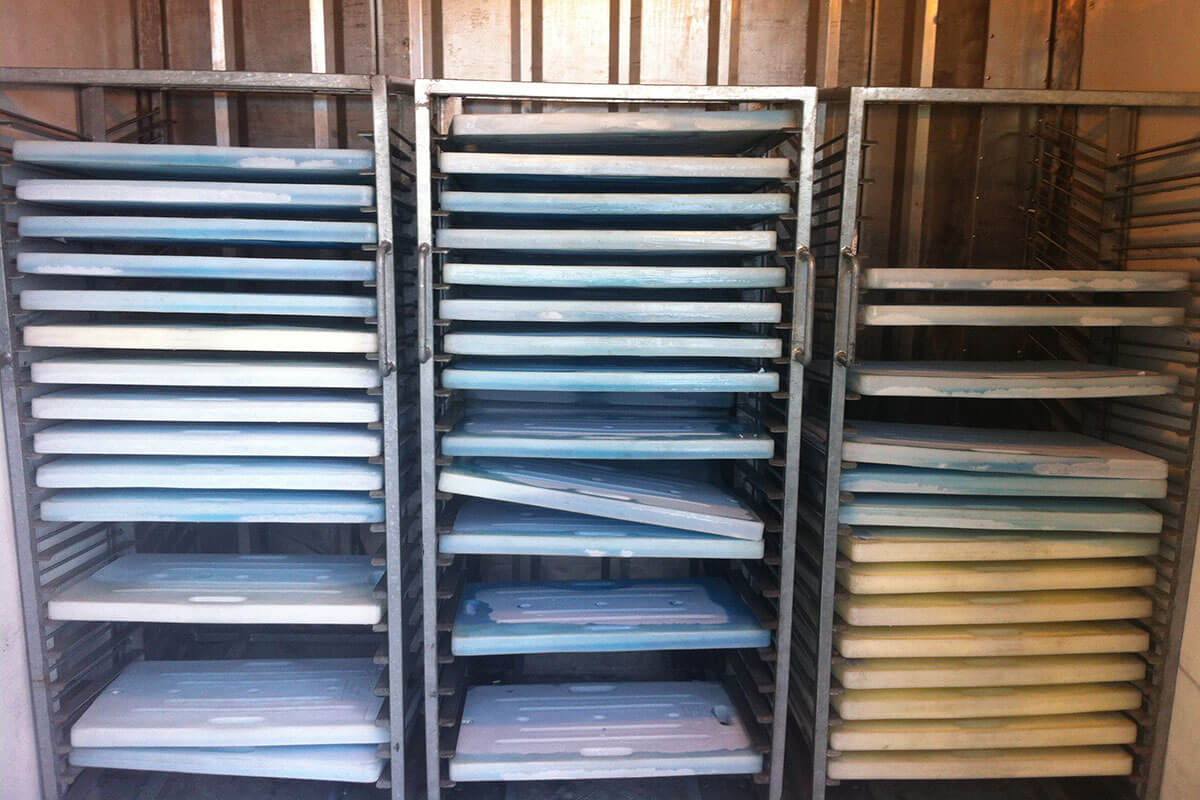
Plate freezing is a way to quickly freeze food by putting it directly between two cold metal plates. This method is employed when the meal shape comprises two parallel, flat surfaces. The thinner the food is between these two surfaces, the quicker the freezing process will take place.
Commonly frozen in plate freezers are brick-shaped packaged foods. In plate freezers, refrigerant is allowed to circulate within the plates’ tiny channels. The bundled items are compressed tightly between the plates. High heat transfer rates can be achieved between the packed product and the refrigerant plates.
The frozen meals are then packed in cartons following the freezing process. The cartons are labeled and kept in a freezer warehouse until they need to be sent to stores.
Different types of plate freezers
Horizontal plate freezers and vertical plate freezers are the two most common plate freezer types. In general, they perform the same duty, but slightly differently.
The plates are horizontal in the horizontal late freezer. Items can be put into or poured into the vertical parts of a vertical plate freezer, frozen quickly, and then easily taken out as frozen blocks and stored until they are ready to be sent for distribution. This shows that the whole process is very effective and can be very advantageous for commercial food companies.
The operation of plate freezers
Plate freezers have a set of flat plates that are next to each other and circulate coolant. The plates can be installed in either a horizontal or vertical orientation. A hydraulic system is used to open the space between the plates for loading and unloading and to close the space between the plates when the food is frozen so that it is in good contact with the plates.
Between the plates and the pressure relief valve in the hydraulic circuit, spacers or limit stops can be utilized to prevent the product from being crushed unevenly or excessively flattened during plate closing. Vertical plate freezers are ideal for freezing unpackaged, deformable foods like fish and meat.
Direct gravity feeding of the product between the plates produces blocks. Plate heating and block ejection systems are needed to get the block out at the end of the freezing process. The block may need to be cleaned before it can be used again.
Horizontal plate freezers are often used for things that come in rectangular boxes or are made into rectangular shapes with metal trays or molds. Even though automated systems have been made in which individual plates open and close to allow loading and unloading of rows of food at the same time from feed conveyors and continuous operation, plate freezers are usually loaded by hand and work in batches.
Good, even contact between the plates and the surface of the food is important for better process efficiency.
Why is plate freezing advantageous?
Plate freezing provides several advantages for swiftly freezing food. In general, plate freezers work very well, and the temperature in each section of the plate remains constant. This enables food to be frozen fast and offers a great advantage to businesses requiring the freezing of large quantities of products.



